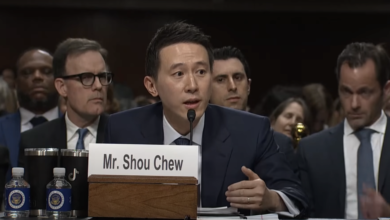This was originally written in June 2016
In a major foreign policy campaign speech on June 2, 2016, Hillary Clinton stated: “Moscow has taken aggressive military action in Ukraine, right on NATO’s doorstep.” (emphasis added by author).
How did the Ukraine, a country in southeastern Europe, come to find itself on the “doorstep” of the “North Atlantic” Treaty Organization?
NATO, founded in 1949, was falsely represented to the American people and the world as a defensive alliance against a supposed “Soviet threat.” It never was.
Proving the point, after the dissolution of the USSR in 1991, NATO, instead of being disbanded, moved aggressively eastward, despite assurances to Moscow by top officials in the George H.W. Bush administration that it would not do so.
On February 9, 1990, Secretary of State James Baker met with Soviet leader Mikhail Gorbachev in Moscow and told him that if the Soviet leadership accepted a reunited Germany’s membership in NATO, there would be “no extension of NATO’s jurisdiction for forces of NATO one inch to the east.” German foreign minister Hans-Dietrich Genscher repeatedly made similar assurances to Soviet leaders. (Spiegel ONLINE, 11/26/2009)
Since then however, NATO has added 12 countries, all in eastern and central Europe far from the North Atlantic, including four that border Ukraine – Rumania, Hungry, Slovakia and Poland, thus “the doorstep.”
NATO is presently in the process of adding Montenegro. Why would NATO be eager to bring in a small nation of just 650,000 people on the Adriatic Sea with a long history of friendly ties to Russia?
Commenting on NATO’s invitation to Montenegro, Admiral Vladimir Komoyedov, chairman of the Russian Duma’s defense committee, commented: “They are ready to admit even the North Pole to NATO just for the sake of encircling Russia. NATO was and remains an adversary of Russia.” (NY Times, May 19, 2016)
NATO’s eastward march continued during Clinton’s tenure as Secretary of State with the addition of Albania and Slovakia in 2009. The Obama administration took aim at incorporating Georgia and Ukraine, with the State Department taking the lead. Billions of dollars were allocated to support “democratic” forces in both countries.
Clinton herself joined a State Department hosted “Tech Camp” in Lithuania in June 2011, organized to train, advise and assist “pro-democracy” activists in the Ukraine, Belarus, Russia and other former Soviet republics.
Ukraine shares a long border and deep economic ties with Russia. Bringing Ukraine into both the European Union and NATO has been a major project of the State Department under both Clinton and her successor, John Kerry. Ukrainian membership in NATO would mean that U.S. nuclear missiles could be based on Russia’s borders, just minutes away from Moscow and other major Russian cities.
In late 2013, elected Ukrainian President Viktor Yanukovych announced the acceptance of a $15 billion assistance package from Russia. Ukraine was in the midst of a severe and deepening economic crisis. That set off a series of protests by pro-Western and outright fascist forces inside Ukraine, demanding that Yanukovych, who had sought a balanced relationship with Russia, the European Union and the U.S., must resign.
While Clinton was no longer in office, her prodigy and spokesperson, Victoria Nuland, now elevated to the position of Assistant Secretary of State for European and Eurasian Affairs by President Obama, played a key role in the protests, which she personally joined, famously distributing cookies to participants and urging them on.
In a widely publicized incident, a Nuland phone call was caught on tape in Kiev, in which she shouted at one point, “F— the EU,” as the European Union was not taking in her view a sufficiently hard line. In the same taped call with another U.S. official she insisted that “Yats” (Arsiniy Yatsenyuk) must become the new leader after the goal of regime change was accomplished.
On February 21, 2016, an agreement to end the crisis was reached under the aegis of the French, German and Polish governments, but the following day armed fascist forces from the Svoboda party and the Right Sector led a coup that forced Yanukovych into exile.
He was immediately replaced by Yatsenyuk as interim leader.
But Washington’s euphoria over the prospect of incorporating such a strategically key country into its anti-Russia military alliance turned out to be short-lived. The Russian government refused to go along.
Russian troops were sent into Crimea, the home base of the Russian Black Sea Fleet. A referendum was held on Crimea rejoining Russia, which was overwhelmingly approved by over 95% of the votes. For hundreds of years Crimea had been part of Russia, and only in 1954 transferred to Ukraine. But at that time, Russia and Ukraine were both republics within one state, the Soviet Union.
If Crimea had remained a part of Ukraine and Ukraine had become a part of NATO, the U.S. would have insisted on the expulsion of Russian naval forces and the conversion of Crimea into a NATO base. There was no way that an independent and sovereign government in Moscow could have accepted such an outcome.
Clinton’s repeated outcries in her memoir about “Russia’s illegal invasion of Crimea,” and “Russia’s illegal annexation,” emphasize how stung she and other U.S. leaders were about being stymied, especially after seeming to be on the brink of triumph.
The Ukraine intervention turned out to be, like so many of the others that Clinton and her fellow neo-cons have initiated or supported in recent years, a classic case of imperial overreach.
Feature image: Map of NATO historic enlargement in Europe. Credit: User:Patrickneil, based off of Image:EU1976-1995.svg by glentamara. LIcense: Creative Commons Attribution-Share Alike 3.0 Unported





